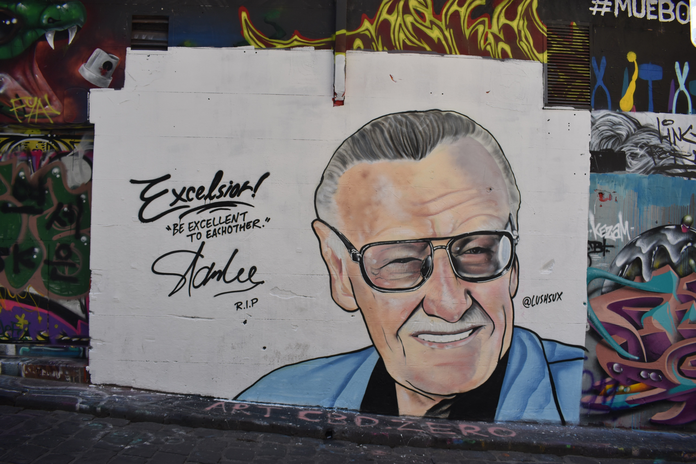One of the reasons Stan Lee became the face of Marvel instead of the other extremely and equally talented Marvel artists such as Jack Kirby, Joe Simon, or Steve Dinko was that Stan Lee had a mind for business and creativity. Over the years, there has been controversy surrounding Stan Lee’s legacy. In short, over the years people have questioned publicly why Stan Lee was getting all the credit for Marvel when hundreds of artists and writers helped contribute to the Marvel’s popularity. Stan Lee was there from the very beginning of Marvel. He was hired as an artist at the age 16 and became editor in chief and art director for Marvel comics at age 19. In 1972 he became the publisher of Marvel Comics. (In fact, Marvel was only named Marvel in 1961 with the creation of the Fantastic Four. Previously Marvel was called Timely Comics from 1939 to 1950 and Atlas Comics from 1950 to 1961.) Working for a big creative company has its pros and cons. One of the main downsides is that if you want a guarantee that your work will be published, you have to accept that the company owns and takes credit for your work’s success . Stan Lee recognized this harsh reality of working in professional creative areas and followed in the footsteps of Walt Disney. Disney took all the credit for everything that came out of the “House of the Mouse” during his tenure. Lee and Disney played the long game. In exchange for stability and safety one gives up the rewards of taking risks. There is a “no guts no glory” theme in the artistic industry. If you list well-known artists such as Vincent van Gogh, Emily Dickinson, or Bach, most of them weren’t famous until after they died.
What granted Stan Lee and Walt Disney fame while they were alive was the fact that they were visionaries. Just as Walt Disney believed that animation could be both a mainstream form of entertainment and an art form, Stan Lee had a dream of making superheroes and comic books more accessible. Both helped define Americana. Stan Lee knew the importance of comic book characters reflecting everyone in society. He included this aspect in his own characters but also mandated it throughout Marvel, as editor in chief. Stan Lee “popularized superheros dealing with human problems–making them relatable.”
At the peak and popularity of Marvel Comics in the 1970s to 1980s, Stan Lee realized that his stories never had to end. They could have, as Lee construed it, the illusion of change. At the end of a comic book a villain could be unmasked or the hero could destroy an evil mad scientist’s lair. However, the hero’s core internal conflict would remain and evolve with each new storyline or interpretation. The recognizable hero regardless of external conflict allowed the character to go through many different adventures and plot lines. For example, Captain America’s core internal conflict is his struggle to fit into his surroundings. In Captain America: the First Avenger, Steve Rogers struggles to fit into the army environment as a skinny kid who never obeyed orders. In Avengers and Captain America: Winter Soldier Roger’s same internal conflict of not fitting in takes form as being a man out of his time. In every Captain America storyline Steve Rogers deals with being a fish out of water. Consequently, the Captain America is recognizable audiences in any interpretation. Stan Lee had unlocked a key to serial drama—the foundation of today’s forever franchises. The idea of a franchise helped the Harry Potter and Star Wars movies gain popularity with each new movie.
https://www.hercampus.com/school/seattle-u/marvel-and-star-wars-making-geek-chic


